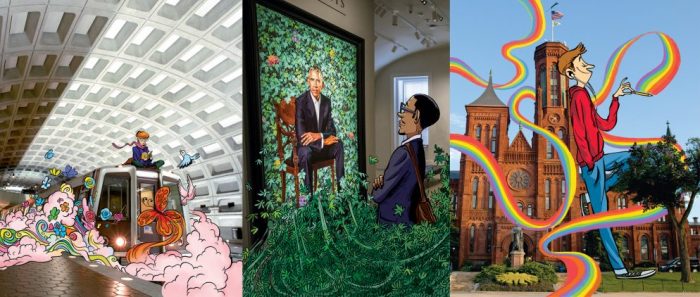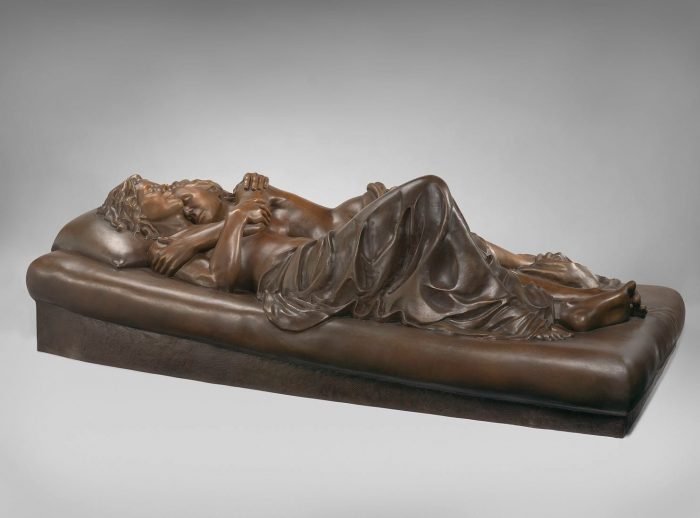ICYMI: Highlights from the week that was Nov. 11 – Nov. 17, 2018
No one can keep up with everything, so let us do it for you. We’ll gather the top Smithsonian stories from across the country and around the world each week so you’ll never be at a loss for conversation around the water cooler.
This week, we have ideas on how to be alone among the madding crowd. However, if the madding crowd is your thing, get a sneak peek at the Indy 500.

New York Design Museum Cooper Hewitt Explores Future Mobility
Forbes, November 12

The 2017 Float concept by Yuchen Cai, University of the Arts London, for Renault Car of the Future (Courtesy RENAULT)
Future mobility is a hot topic. As cities become ever-more populated, expanding into dense megacities so vast and large and complex, how we intend to move most efficiently is of clear concern. Most cities, especially those in Europe, were created long before the advent of the motorcar. They have had to grow organically to somehow accommodate the manic daily movement of pedestrians, cars, bicycles, motorbikes, trains, trams, trucks, buses, pets. It is sheer chaos. Read more from Nargess Banks for Forbes.
Remembering Matthew Shepard in Today’s Climate of Hate
During a time that finds Americans grappling anew with the horrors of normalized bigotry, the icon’s personal belongings have found a new home at the Smithsonian.
The Atlantic, November 12

STEVE LISS / THE LIFE IMAGES COLLECTION / GETTY / ANGELA HE / THE ATLANTIC
In October 1998, Reggie Fluty, a police officer responding to a phoned-in tip, came across a limp figure strung up on a fence in a desolate field on the outskirts of Laramie, Wyoming. There had been, initially, confusion about what Fluty was responding to: The teen boy who had called in the tip had initially assumed, riding his bike across the field, that he’d seen a scarecrow. He had not. The figure was the body of Matthew Shepard, 21 years old and a freshman at the University of Wyoming, who had been tied to the fence by two men he’d met in a bar in Laramie. They had robbed Shepard of the money in his wallet—$20—and then struck him across the head, repeatedly, with the butt of a large Smith & Wesson revolver. (The blows were so severe, a sheriff would later conclude, that Shepard’s injuries, including a fractured skull and a crushed brain stem, were less consistent with a beating than with a high-speed traffic collision.) The men then left Shepard, bloodied and swollen and barely alive, in the biting cold of the prairie night. It would be 18 hours before the bike-riding boy would find him. Read more from Megan Garber for The Atlantic.
7 DC Insiders Share How They Make Time to Be Alone
Washingtonian, November 13

Photo-illustrations by Zohar Lazar.
Washington seems to breed its own type of solitude. It’s not quite akin to the bustling alone-in-a-crowd alienation of New York or the flâneur-esque melancholy of walking the Seine in Paris. The feeling of being alone here creeps up on you, a byproduct of residing in the shadow of so much history and power. You feel it as you ride Metro late at night over the Potomac, past the illuminated silhouette of Jefferson in his domed memorial, or as you walk block after block of the behemoth office buildings lined up like Brutalist honeycombs in the center of the city. Read more from Hayley Garrison Phillips for Washingtonian
Amazon arrival spurs Virginia Tech to build technology campus in Northern Virginia
The Washington Post, November 13

A rendering of the planned Innovation Campus. (Courtesy Virginia Tech) (Courtesy of Virginia Tech)
Virginia Tech plans to build a $1 billion graduate campus within walking distance of Amazon’s new headquarters in Northern Virginia, the keystone in an expansion of technology education in the state designed to lure the company to the region and then to address the long-term impact of Amazon’s decision.
Virginia Tech’s president, Tim Sands, called it a watershed moment for the school, one that will drive economic development in Virginia. It’s also a moment of change for other universities in the commonwealth. Read more from Susan Svriuga for the Washington Post.
How has the selfie evolved? This new Portrait Gallery exhibition charts its rise, from 1900.
The Washington Post, November 15

Patricia Cronin’s bro9nze sculpture of herself and her spouse, Deborah Kass, is both traditional and contemporary. (Digitized by Mark Gulezian/Ptricia Cronin/National portrait Gallery, Smithsonian Insitution/Gift of Chuck Cronin)
In 1839, Philadelphia photographer Robert Cornelius was probably the first to do something that has become a national pastime: take a selfie. The technology has changed a lot since then, as illustrated by “Eye to I: Self-Portraits From 1900 to Today.” The attitudes have changed even more.
“Eye to I” is the final exhibition of the ones mounted to mark the National Portrait Gallery’s 50th anniversary. Most of the previous exhibitions have featured people who aren’t usually noticed by official portrait galleries: slaves, workers, lynching victims and even those literally invisible to history — represented by the images in another 50th-anniversary show, “UnSeen: Our Past in a New Light.” Read more from Mark Jenkins for The Washington Post.
Sneak Peek: Smithsonian Channel to Air First Color Footage of Inaugural Indianapolis 500
Sports Illustrated, November 15
The Smithsonian Channel series America in Color, which returns for a second season on Sunday, is set to air footage of the inaugural Indianapolis 500 for the first time in color.
The clip will be featured in the second episode of the season, “Titans of Industry,” which will air on Nov. 25. In addition to highlighting the 1911 race, the episode will chronicle the lives of three influential families—the Fords, Firestones and Edisons—over 70 years. You can watch a preview of Smithsonian’s Indianapolis 500 footage in the clip above. Read more from Charlotte Carroll for Sports Illustrated.
Posted: 18 November 2018
-
Categories:
American Art Museum , American History Museum , Cooper Hewitt Museum , Portrait Gallery








